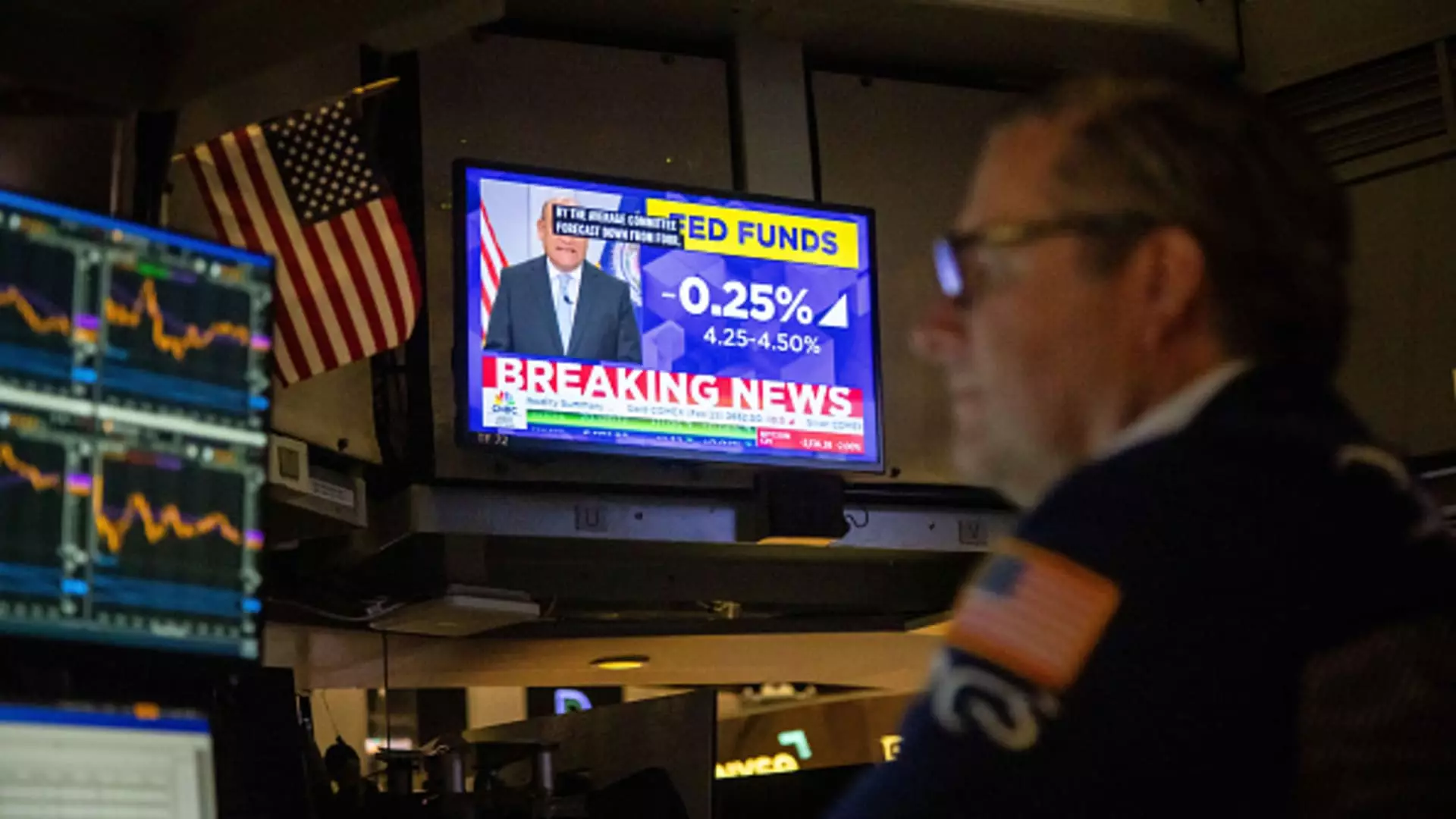Financial markets are often characterized by their volatility, a measure significantly captured by the CBOE Volatility Index, or VIX. This index serves as a critical indicator of investor sentiment, specifically reflecting the expected volatility of the S&P 500 over the next 30 days. On a day marked by unexpected announcements from the Federal Reserve, the VIX experienced its second-largest percentage spike in history, underscoring the market’s sensitivity to monetary policy changes.
On a recent Wednesday, the VIX soared by an astounding 74%, closing at 27.62. This notable increase brings to light the heightened anxiety among investors following the Federal Reserve’s decision to reel in its previously anticipated rate-cutting measures. Initially projected to enact four rate cuts next year, the central bank’s new stance indicated only two cuts, causing ripples of concern throughout Wall Street. For investors who have relied on low interest rates as the bedrock supporting the ongoing bull market, this shift in policy was particularly alarming.
The implications of such a dramatic shift in the VIX were felt throughout the stock market, leading to significant declines in major indices. The Dow Jones Industrial Average experienced a staggering drop of 1,100 points, marking its tenth consecutive loss. Historical precedents suggest that a VIX reading above 20 indicates a heightened level of fear among market participants. However, up until this sudden spike, the VIX had largely hovered below this threshold, suggesting an unsettling complacency among investors who underestimated potential market risks.
As the VIX serves as a gauge of investor fears, its sudden ascent indicates a rush among traders to secure downside protection via put options. This protective behavior is often a telltale sign of apprehension concerning future market declines. The context of this spike is interesting, especially when considering the lack of volatility experienced earlier this year, leaving investors exposed to the surprises that come with unexpected policy shifts.
This surge in VIX is notable not only for its magnitude but also for its historical context. The peak spike occurred back in February 2018, when a 115% escalation propelled the index above 37, driven largely by turmoil in volatility-linked exchange-traded funds. More recently, a significant 65% rise took place on August 5, 2024, as recession fears loomed large, contributing to an intraday peak that saw the VIX surpass 65. Such events highlight that market volatility can be exacerbated by macroeconomic concerns and shifts in investor sentiment.
On Thursday, the VIX showed signs of stabilization, trading just above 20, a decrease of over 25% from the previous day. This retreat suggests possible market recalibrations as investors digest the Fed’s announcements and reassess their strategies in a changing economic landscape. It remains crucial for market participants to closely monitor the VIX and its movements, as it could provide critical insights into future market trajectories.
The recent swings in the VIX serve as a stark reminder of the interplay between monetary policy, investor psychology, and market volatility. As the Federal Reserve navigates the complexities of an ever-evolving economic environment, investors must remain vigilant and informed, recognizing that complacency can lead to significant consequences in the financial markets. Understanding the intricacies of the VIX and its implications could well be the key to positioning oneself effectively during times of uncertainty.

